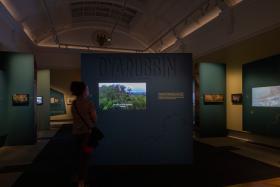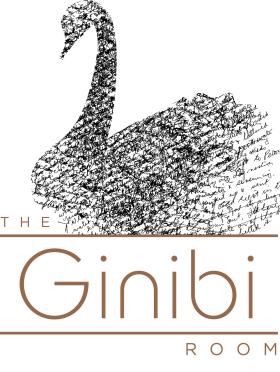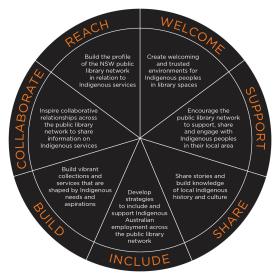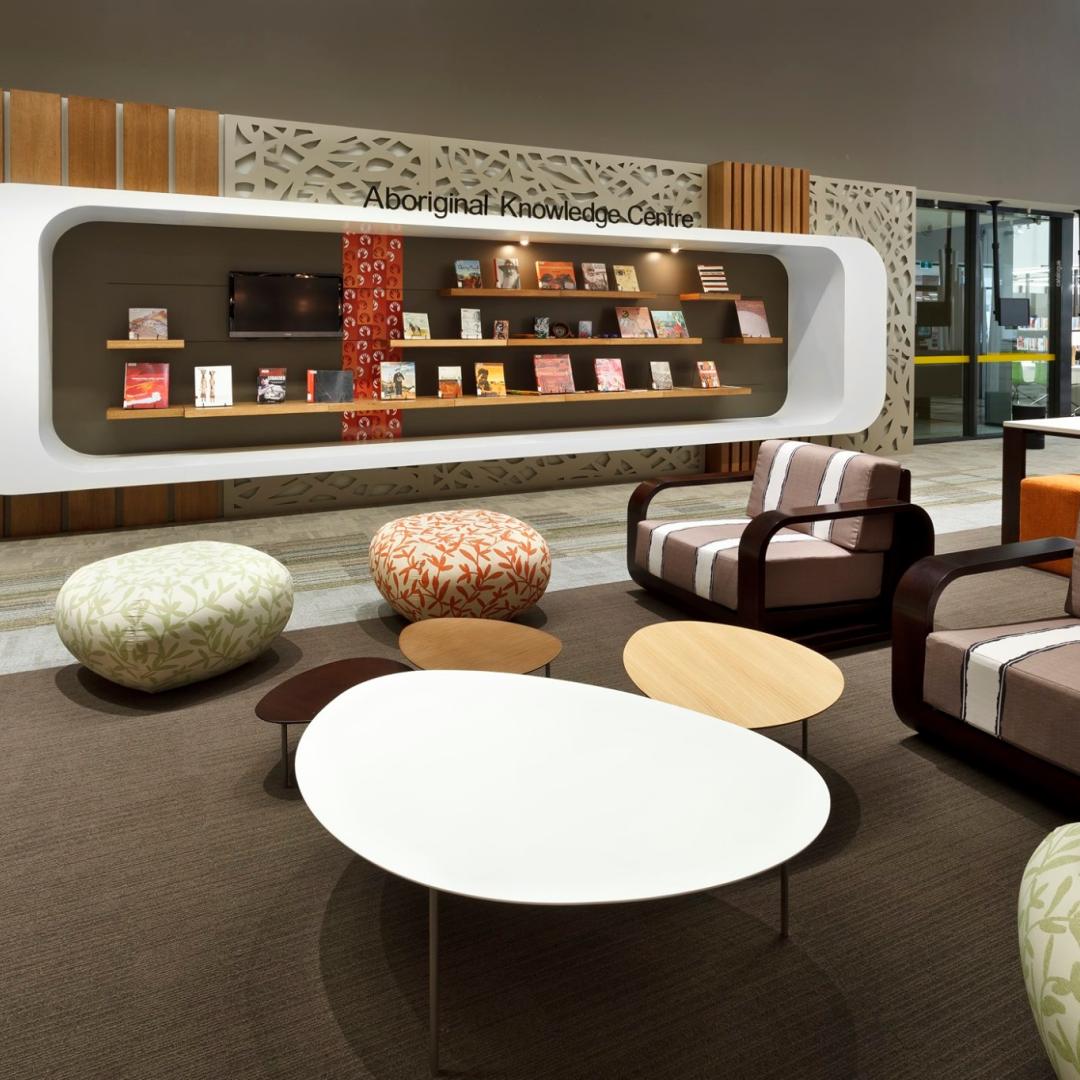Indigenous Spaces in Libraries
The Library supports building culturally safe and welcoming spaces in libraries for First Nations peoples and communities, with inclusive collections and services.
It is my view that you need to look carefully at the way Aboriginal people are portrayed in libraries, and you need to reach out to Aboriginal people and show us that we are welcome to participate in an area which we were excluded from for a long time.
Mick Dodson, 1993
Part of the Library's ongoing commitment to enhancing services dedicated to the Aboriginal and Torres Strait Islander people of NSW is the creation of library spaces that engage with the history and lived experience of First Nations people.
First Nations Gallery

The First Nations Gallery on Level 1 of the Mitchell Library building was opened in 2019 as a dedicated space for exhibitions created by First Nations curators and artists, that are based on the Library's collections, about the lives of Aboriginal and Torres Strait Islander people.
The gallery is free to visit whenever the Library is open. Exhibitions change regularly - check the Library's What's On guide for further information.
You can also book tours for your community by contacting the Indigenous Engagement team.
Ginibi Room

The Ginibi Room, on the ground floor of the Mitchell Library building, was officially opened in 2023. It is a private viewing and consultation room for First Nations visitors and scholars to use when working with sensitive materials from the Library's collections.
The room is named in honour of Dr Ruby Langford Ginibi (1934-2011), the celebrated Bundjalung author, activist and historian, whose personal and literary papers are held in the Library's collections. Dr Ginibi was a staunch advocate for the rights of First Nations people, people in custody and people with disability. Her writing was open-hearted and searingly critical of racist systems and injustices affecting the lives of First Nations people. She received numerous awards and fellowships, including the inauguaral History Fellowship from the NSW Ministry of Arts (1990).
Her name, Ginibi, means 'black swan' in Bundjalung, and this is represented on the door through a design created from one of her manuscripts. We thank her family for their kindness and permission to use her name, image and work in this way.
We can take bookings for this room.
Indigenous Spaces in Library Places strategy and online toolkit
New South Wales is home to the largest number of Indigenous peoples in Australia, including those living in suburban areas of Sydney and other cities, those in country towns and those in smaller, often regional and remote predominately Aboriginal communities. Public libraries have an important role in providing services and collections for these diverse communities across the state.
The Library developed the Indigenous Spaces in Library Places strategy and online toolkit in 2016 to help public libraries engage and support their local Indigenous communities.
Key objectives of the Indigenous Spaces in Library Places strategy

The strategy's aim is to build a vibrant public library network inclusive of Indigenous peoples and communities by providing culturally safe and welcoming spaces, collections and services.
Download the strategy document
This pie chart represents many opportunities that every library can shape along its journey.
Download the strategy objectives diagram
The document was formally endorsed by the Public Libraries Consultative Committee Terms of Reference (PLCC) on 4 April 2016.
Indigenous Spaces In Library Places Public Library Toolkit
Public library staff can use the free Indigenous Spaces in Library Places online toolkit to download customisable resources, such as an Acknowledgement of Country poster, Special Care notices for sensitive/restricted collection materials, and Aboriginal-flag spine labels, a calendar of important dates, as well as read case studies from other libraries across the state.
